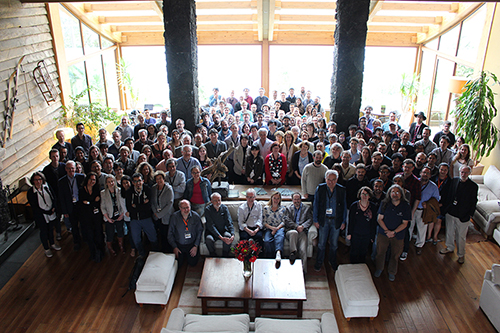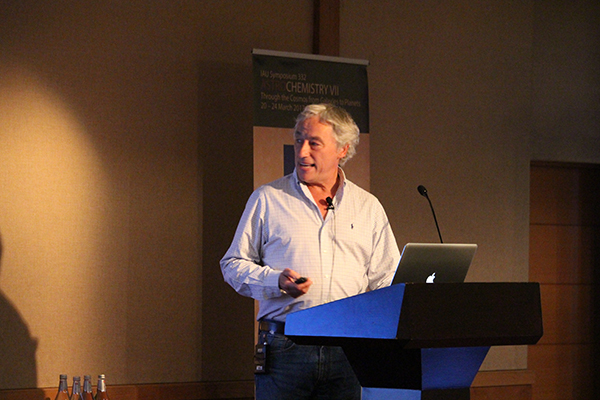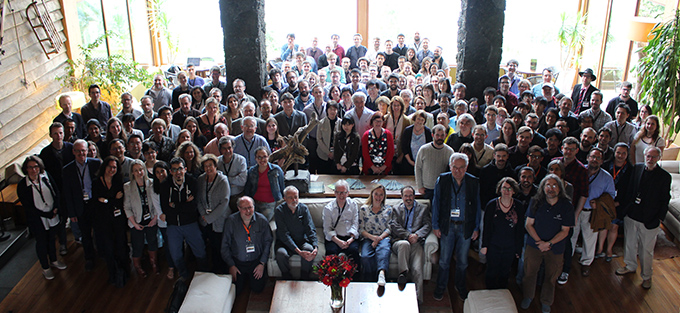International Astrochemistry Conference Demonstrates the Role of ALMA in the Field
Close to 200 astronomers from around the world met this week in Puerto Varas, Los Lagos Region, Chile, to present the latest findings in astrochemistry, the branch of science responsible for studying the chemical composition of the interstellar gas. More than half of the presentations involved research conducted with ALMA, showing the observatory's overwhelming potential in this area.
Scientists from 29 countries came together from March 20 to 24 in southern Chile to attend the conference: “Astrochemistry VII - Through the Cosmos from Galaxies to Planets.” The goal of the conference was to gather astronomers - observers, modelers, theorists, and experimentalists- to discuss the most recent results and explore future opportunities generated by the latest technology, in conjunction with new observatories, laboratories and high-performance equipment.

For Professor Tom Millar, co-director of the conference, “the choice of holding this conference in Chile was an easy one because of the wonderful new results that ALMA is producing. Its fantastic combination of high sensitivity and high spatial resolution is giving us amazing new insights into processes such as star formation, the birth of solar systems, including processes in our Solar System, the death of stars and prebiotic chemistry.”
Of the 57 presentations at the conference, 30 were associated with ALMA data, and the same with a fifth of the scientific posters, which shows that the observatory is living up to its great potential in the area.

“This is the seventh conference of the International Astronomical Union (IAU) on astrochemistry, a series that began in 1985 and has increasingly attracted more young researchers,” explains Ewine van Dishoeck from the Leiden Observatory, the Netherlands. “This conference is special. It is the first to use scientific data from ALMA, which is the main ‘astrochemistry machine’ of the time and is starting to show its full potential.”
ALMA Director, Pierre Cox, adds that “ALMA is revealing the molecular Universe in a way that was unimaginable until now, from stars in formation to protoplanetary disks, from nearby galaxies to the firsts galaxies in the early Universe.”
Many astronomers that attended the conference agrees that it is fortunate to be doing research on astrochemistry in the ALMA era.
Additional information
ALMA is a partnership of ESO (representing its member states), NSF (USA) and NINS (Japan), together with NRC (Canada), NSC and ASIAA (Taiwan), and KASI (Republic of South Korea), in cooperation with the Republic of Chile. The Joint ALMA Observatory is operated by ESO, AUI/NRAO and NAOJ.
Contacts
-
Nicolás Lira
Education and Public Outreach CoordinatorJoint ALMA Observatory, Santiago - ChilePhone: +56 2 2467 6519Cel: +56 9 9445 7726Email: [email protected]

